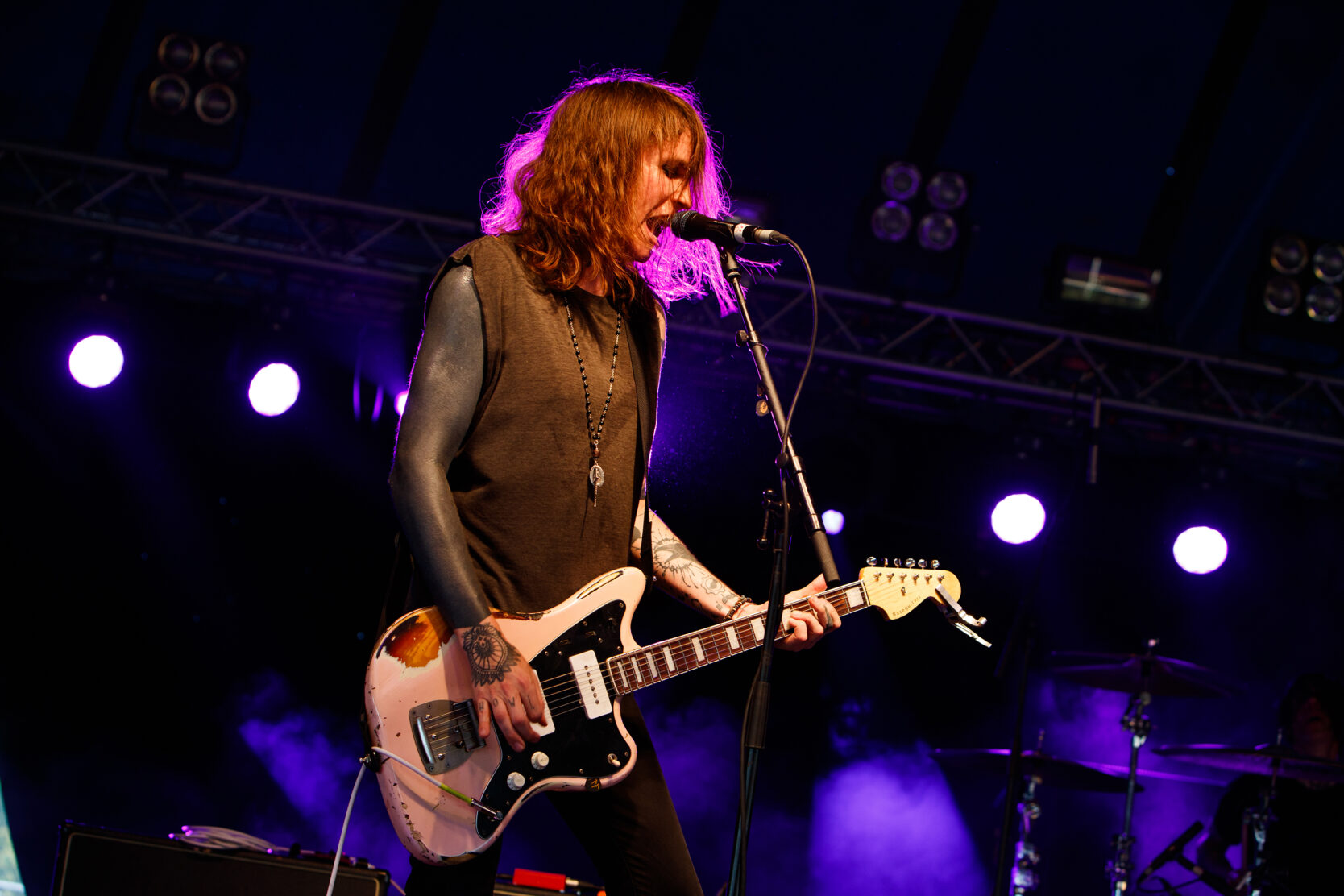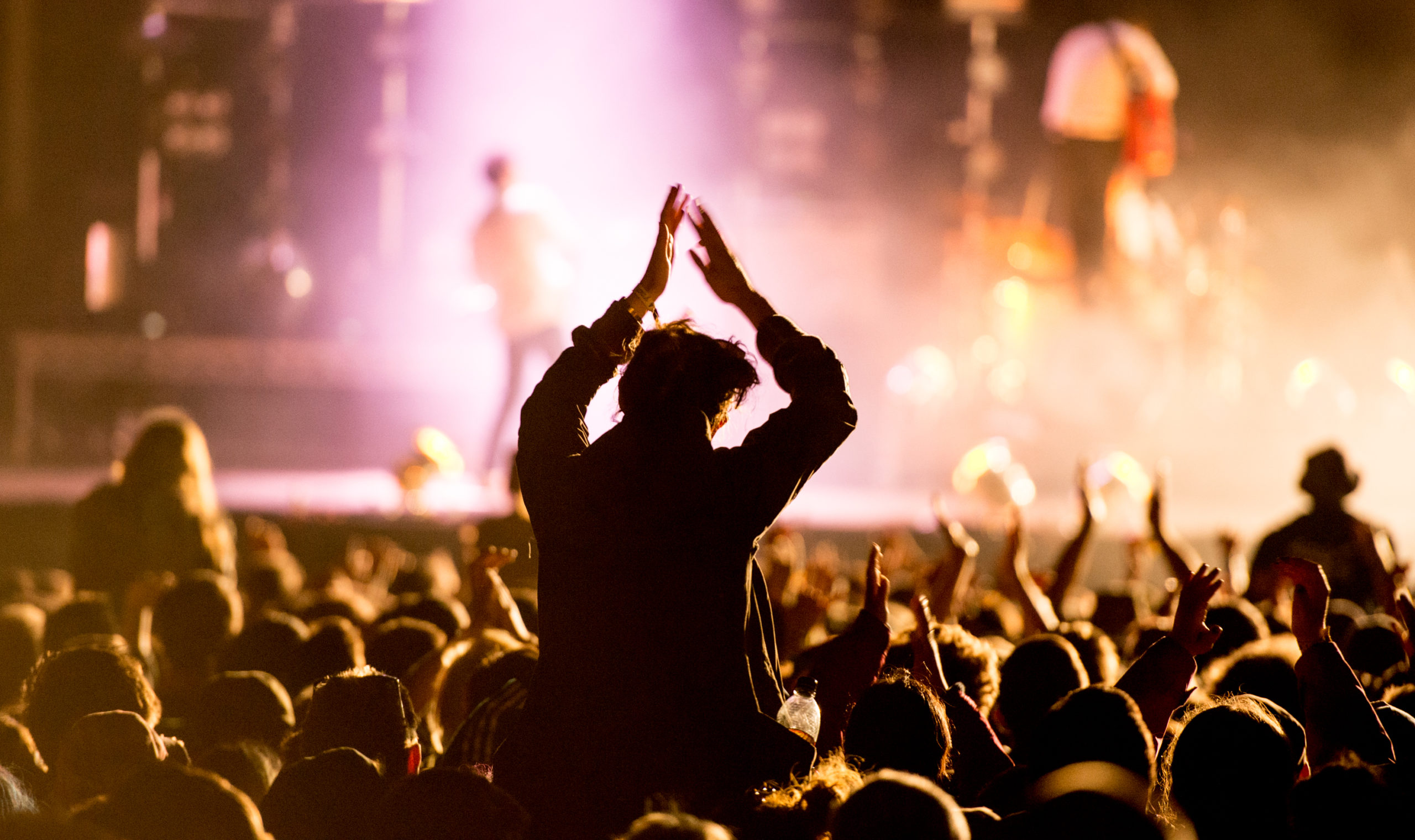“Everyone’s experience of this thing is unique to them, even if the crushing weight of capitalism is royally fucking all of us,” PUP’s Steve Sladkowski says, of the pressures to get out on the road amidst the unknowns of today’s COVID world.
Touring in the thick of the ongoing COVID-19 pandemic has seen hurdle after hurdle. While artists are slowly getting back to packing their vans and hitting the road, the threat of contracting COVID is still an added weight on the minds of musicians planning tours and shows of all sizes.
Laura Jane Grace just wrapped a month-long road show with Anthony Green (Circa Survive) and Tim Kasher (Cursive, The Good Life). Chatting in April, just before she was set to head out on the road, she laid out some of the hard realities of touring: “Going into it for a month-long run, the amount of overhead that you have going into a show; the financial commitment of ordering merch, leasing a bus and everything that goes into booking a month-long tour…we’re talking about thousands and thousands of dollars.”
Financials aside, even at the best of times touring is a careful dance of managing endless details and trying to mitigate disaster before it strikes. It’s a nightmare Excel spreadsheet brought to life. COVID restrictions and mask mandates only add to an existing headache. Now artists’ to-do lists are expanding to include things like checking the COVID level in every tour stop, planning for COVID tests every step along the way, looking up the mask mandates and how and where they’re enforced (if at all).
Lauren Denitzio, of Los Angeles band Worriers—who recently supported Jawbreaker on select dates of their reunion shows—says this has changed their approach to performing live, especially hard-hitting for smaller venues. “It completely changes basically all of the logistics involved and I don’t know that it would work for us right now if we tried to play a smaller venue in a smaller city,” they say. “We’ve lucked out that for the past year or so we’ve done support tours at medium to larger sized venues.”
But there’s a social aspect to touring as well that is slipping away, as Denitzio tells SPIN, “we’ve got a backstage area that’s isolated and our budget can include a hotel. We’ve kept a pretty tight tour bubble for all of the shows we’ve played, which means no eating at indoor restaurants, no staying with friends, no going out into the crowd unless I’m going to stop by the merch table….”
Every state has different levels of protection, you can look up state-by-state mask mandates, but most states are now lifting their requirements for masking indoors, despite the fact that the pandemic has not yet ended. COVID cases are still rising and as mask mandates have all but disappeared, one has to worry how this impacts the touring music industry and those trying to put wheels to the road once again.
The personal onus of concert goers and the general public to act responsibly is not just for our own health, but for the continued health of people trying to hit the road to entertain. Masking up, though, only solves part of the equation: “You have everyone being like, ‘Please wear a mask at shows so that artists don’t get sick and so that people don’t get sick,’” Laura Jane Grace says. “But then you’re looking at the rest of the country where everyone is doing away with mask mandates…and living in Chicago when I go around, people are kind of giving up on fighting it.”
Denitzio says, of attendees doing their part, “with folks not wearing masks at shows most of the time, which is really disappointing to me, it greatly increases the risk we’re taking if we’re not somehow isolated from the audience when we’re not on stage.”
Alicia Gaines, of Chicago-based band Ganser, adds:“We’ve had to learn how to speak up for our needs more, especially around use of our microphones and things like green room access. Sometimes I indulge the thought that this must get easier eventually, that this can’t go on like this forever. But that’s not how things work. You have to constantly deal with each situation in real-time without spilling into magical thinking. You have to be vigilant, and even for the hypervigilant that can be a lot to take on.”
Speaking to how it feels to be in the midst of all of this, Laura Jane Grace puts it bluntly: “It feels like everyone is already underwater, but saying ‘keep your hair dry, keep your hair dry,’ while we’re fucking sinking.”
As to what individual people can do to make touring a little more sustainable for artists, Grace has some thoughts. “Well, I think wearing a mask. I fully support wearing a mask and I wish that everyone would wear a mask at a show. But I think really, it’s making the adjustment mentally to not having as much expectation for the after show meet-and-greet-type stuff,” she says.
After two years of living under the heel of the pandemic, artists are eager to get back on stages and find a way to make touring a sustainable practice while COVID continues to impact us, whether we want to believe it or not. So much of the early conversation around the pandemic was finding a new normal, that the old normal is gone forever, and perhaps with live music the idea of a new normal is more necessary than ever.





